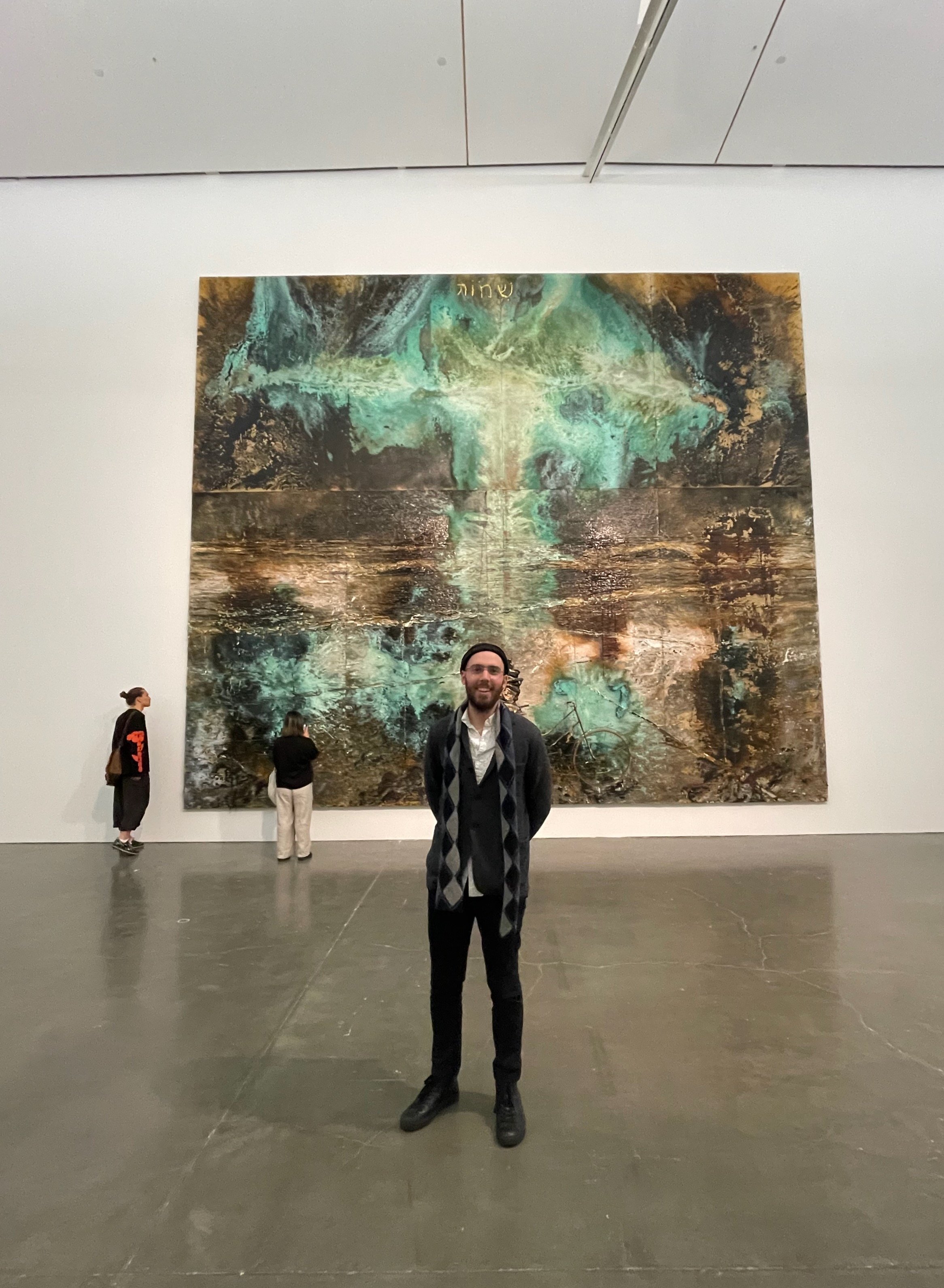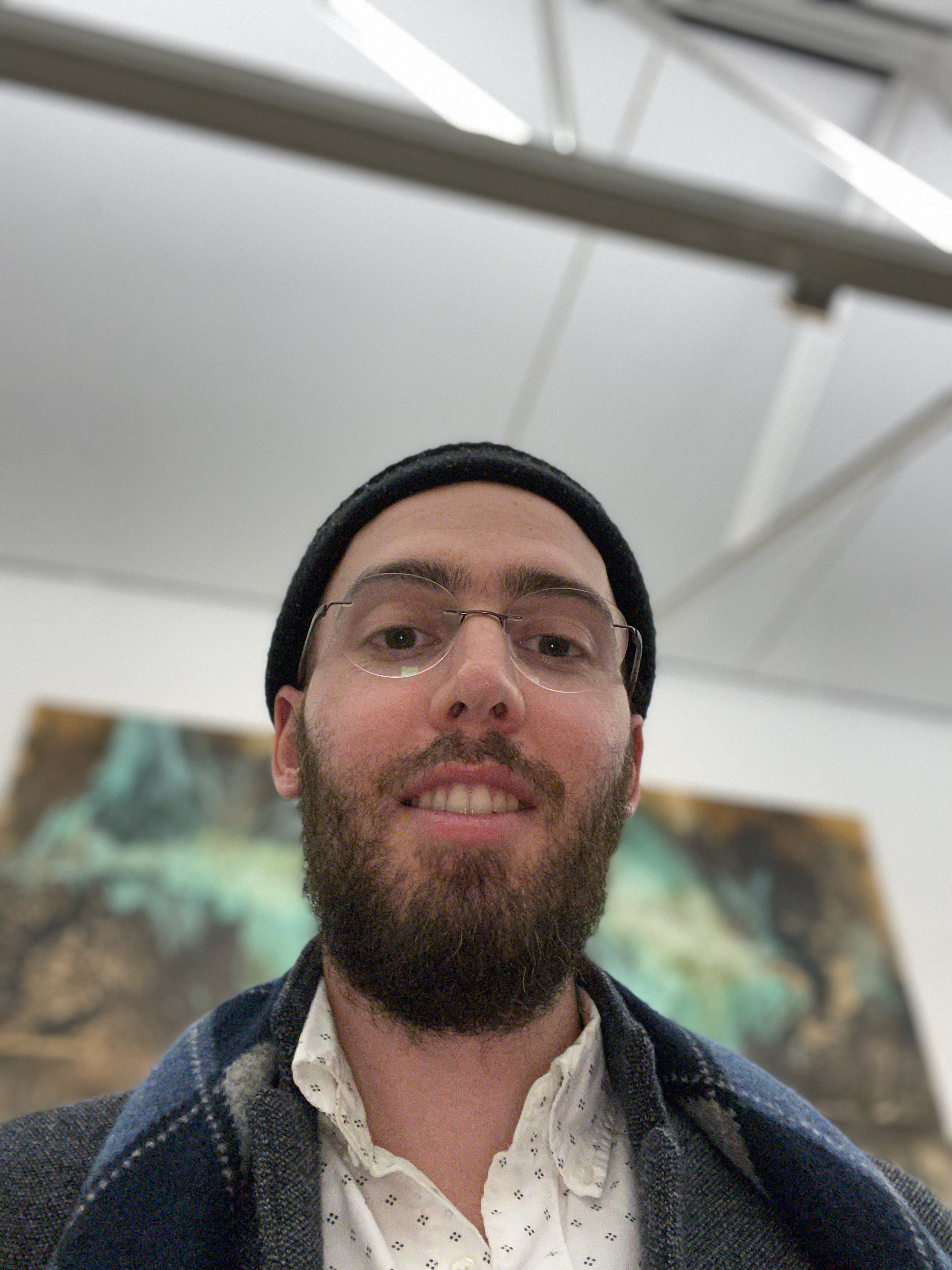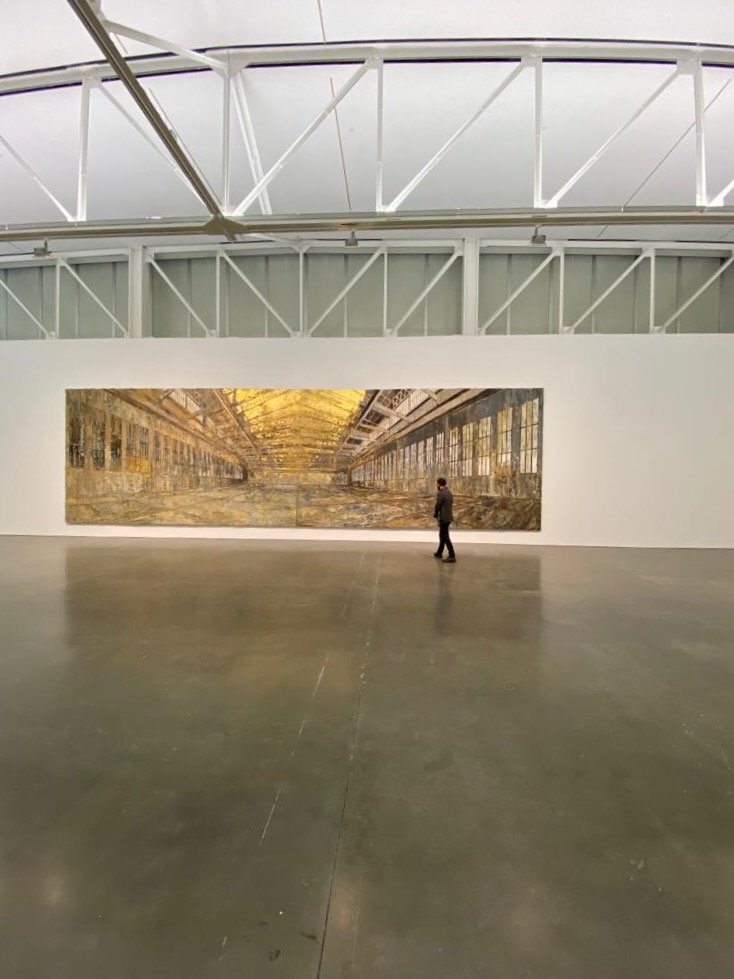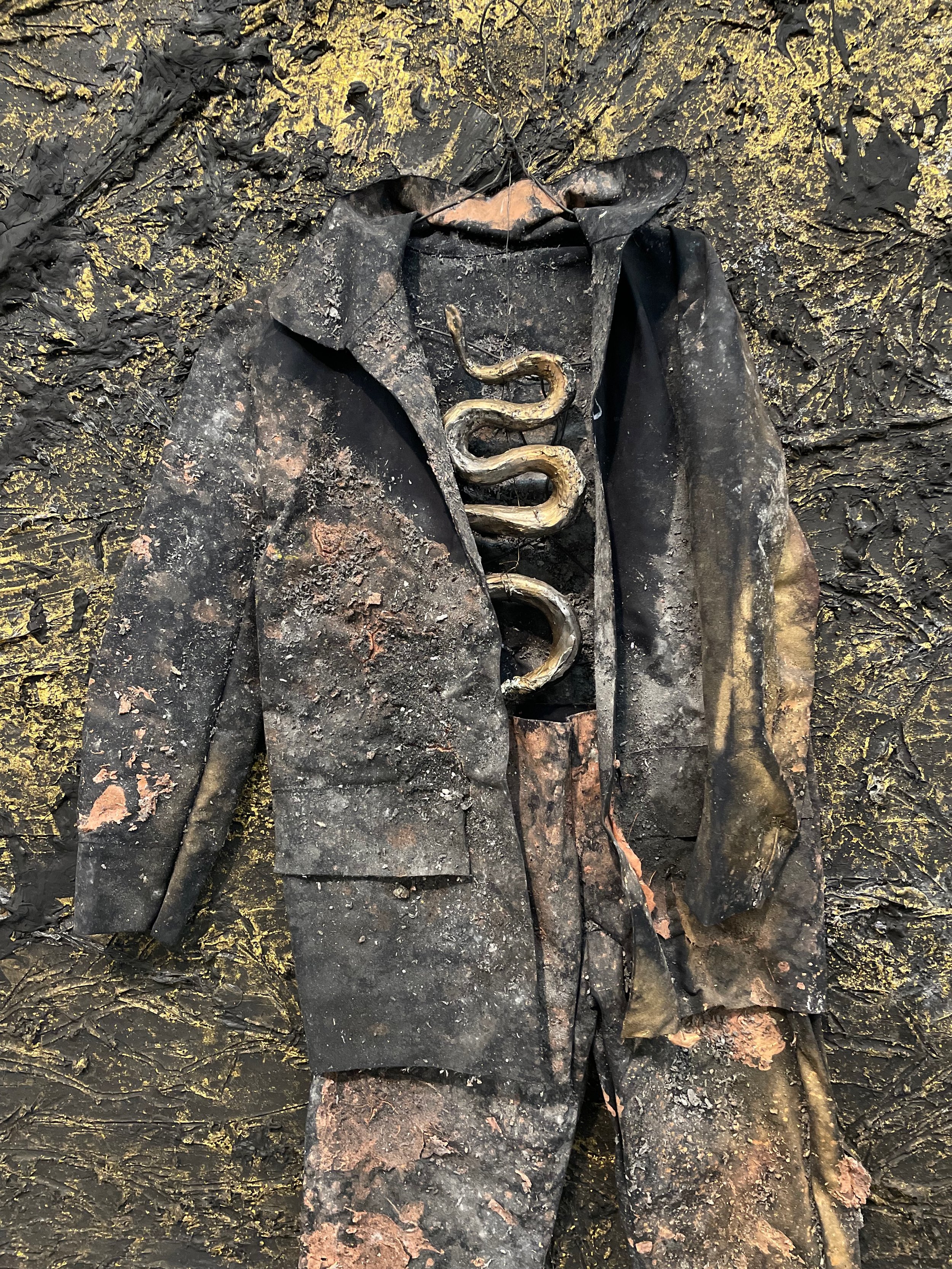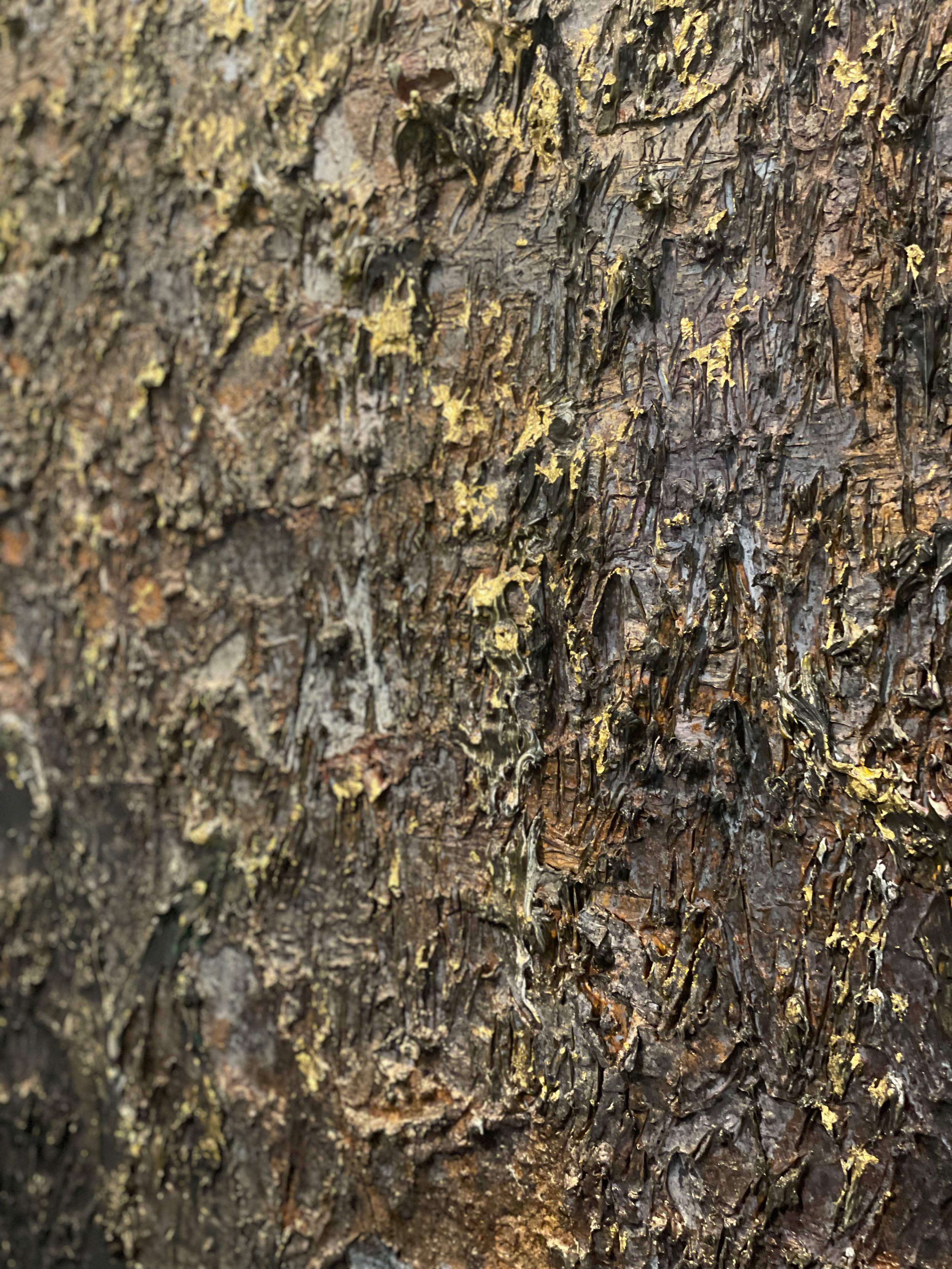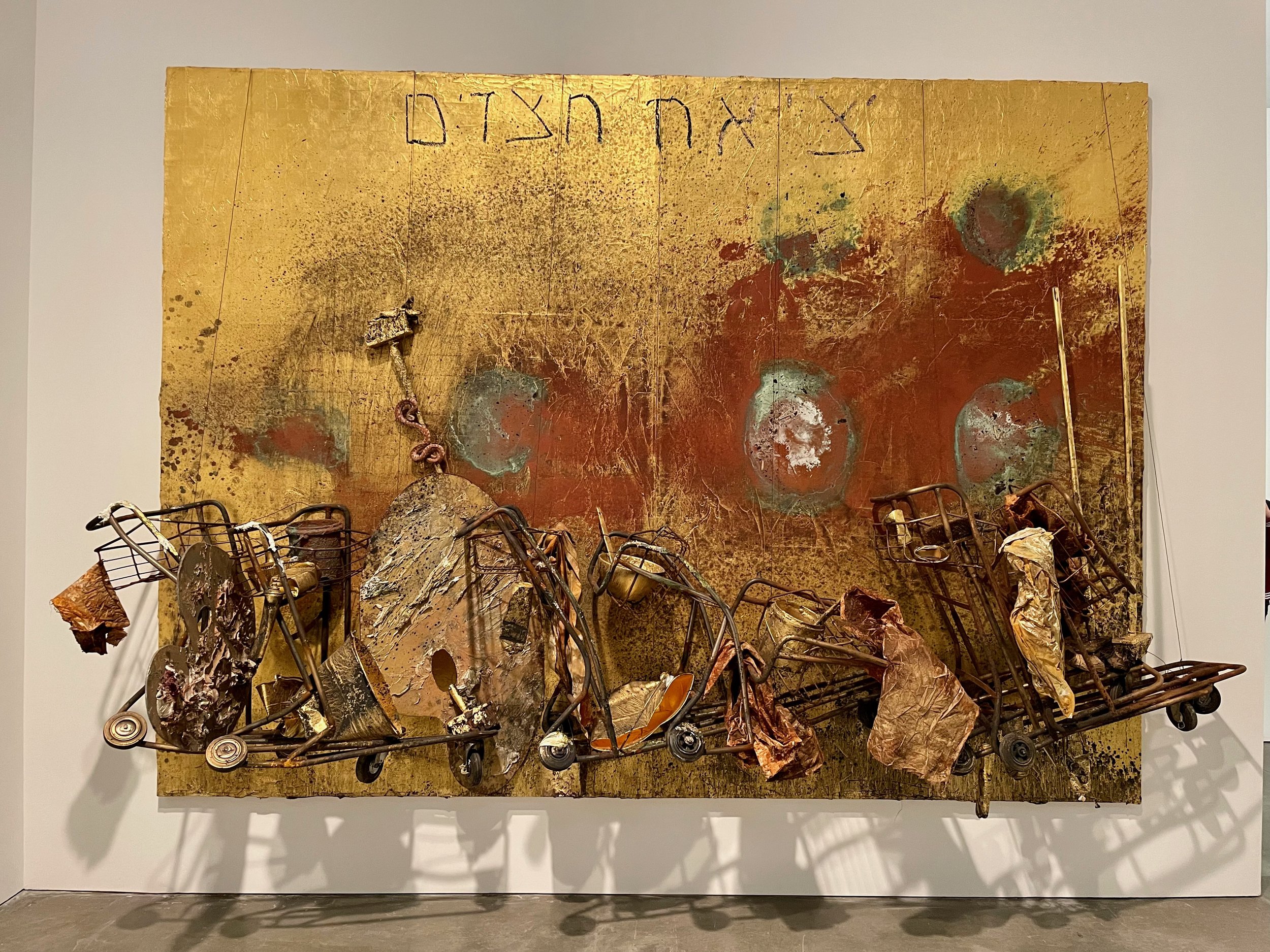Anselm Kiefer installation at Gagosian, 555 West 24th Street, New York. Photographed by Samuel Abelow.
Anselm Kiefer at Gagosian
The first time I discovered Anslem Kiefer paintings, I was struck by the fact that artists could live such idiosyncratic and grand lives. I mean, I knew about historical artists and their larger-than-life lives. But Kiefer’s compound in France is like a grandiose childhood fantasy made manifest.
Anyways, when I saw that Gagosian would be holding an exhibition Anslem Kiefer’s “Exodus” paintings, this was meaningful for me personally. I am an American Jew. I was raised secular, gravitating towards the arts – painting, poetry and music. It wasn’t until late 2019 that I discovered there was more – something worthwhile to my spiritual, psychological and physical well-being – with being jewish.. other than bagels, or Hollywood. Now, this Fall-Winter I have been living at a yeshiva in Crown Heights, Brooklyn.
On the evening of November 12, 2022, I pulled up to Gagosian’s Chelsea location in a Vovlo SUV, which my new friend was driving. (I met him at a Shabbat meal.) I walked into the gallery, and nobody was around the star artist — Anselm Kiefer — so I went up and approached him directly.
We had a long conversation.
Deep Readings
I asked him, “How did you come to the Hebrew texts? I know you worked with alchemy previously.”
Kiefer replied that he had been brought up Catholic but has found jewish mysticism much more vast.
I mentioned that I was a jewish artist, who had previously been engaged with Jung and alchemy and now am studying in a religious school. I mentioned that I had just finished the Sabbath (Shabbat) before coming to his show. Kiefer told me about his travels to Israel, and specifically his memories of seeing the Sabbath begin in Jerusalem. He described how he witnessed the religious jews, hastening to get ready for the beginning of the Sabbath, and then seeing the way they walked peacefully with their families to synagogues, and the like. Anselm Kiefer was very warm and genuine in those moments.
I asked him about his jewish studies; He said he had extensively read Gershom Scholem.
As it goes, I had laso been reading Gershom Scholem’s lengthy texts during the pandemic! Scholem was an Israeli-born professor who approached the vast jewish mystical ourvre with an academic approach. He is highly respected and regarded as the founder of such studies. I asked Kiefer if it was “Major Trends in Jewish Mysticism” that he had been studying.
“Yes,” said Mr. Kiefer, who proceeded to mention a slew of esoteric references which I then translated: Isaac Luria (legendary kabbalist, jewish mystic of the 16th C.), the tzimzum (the contraction of infinite light in the creation of the world), the sefirot (spheres which conceptualize the qualities evident in creation; also in personalities). He also mentioned kelim which literally translates to vessels, but has symbolic significance in jewish mystical thought.
I asked if those concepts effected the paintings. He said, “Yes, absolutely!” I mentioned that I had previously viewed documentary footage of his painting process and was struck by the intense material processes he engaged with: pouring led (which is poisonous!) on canvases, leaving the works outside, chopping off corroded chunks from the canvas, applying silver and gold leaf to his surfaces.
Anselm Kiefer said, “I destroy my paintings.”
He looked around, because he knew I was yet to see the show. There was a large, stand-out canvas directly behind him. It featured a large government-type building, along with a sculptural snake that was covered in gold. This was relevant to the Exodus story: Moses returns to the Pharoah’s palace and they have a duel with their respective snakes (well, specifically, sceptors that transform into snakes). I asked Kiefer about the Hebrew Bible and he said that it was the foundation of all the other western religions. I laughed in agreement! Sounded like something someone would say at yeshiva.
I thanked him for the conversation and asked for a photo. A friend of the artist snapped this on my phone:
Anselm Kiefer and Samuel Abelow at Gagosian Gallery, Chelsea NY. 2022.
Epic Paintings
My friend arrived just at this moment and couldn’t believe I asked for a photo — how déclassé! We toured the gallery. All of the paintings were epic in scale. The largest were some 25 ft. Most of the canvases featured paired down color palettes – typical of Kiefer works – of black, gray and gold. There was one particular piece, titled Exodus, gigantic in scale, that had turquoise-colored background produced by poured paint effects, and an actual bicycle in the center. This one was optically engaging, impressive if-not monumental in regard to impact, and unusual. I just don’t see art like this around. It sort of had the feeling of a kitsch project somewhere in the Northern Israel, but taken-up by an elite artists who’s studio has access too electrolysis, metal and 300 inches of canvas stretcher. And that was endearing to me.
Some of the spelling of the Hebrew Bible passages were wrong, my friend noted when we decoded the text at the top of the canvas. Kiefer had mixed up one Hebrew letter for another. But, I appreciated that the German titan of painting was approaching the jewish narratives.
I started to pick up on the fearless approach to the grim in thematic representations of empty rooms (reminiscent of a Holocaust gas chamber) and the effortless humor in his multimedia sculptural elements; Anselm Kiefer used shopping carts and airport luggage carts to convey the theme of the jews leaving Egypt (Mitzrayim) with all their possessions.
Exodus
Several aspects of this experience were inspiring and encouraging to me: Firstly, this renown artist was focusing on jewish identity and narrative; Secondly, much of the attendees to the opening were jews of different stripes and styles, ages and background; Thirdly, I had the chance to speak with a fellow-painter who’s approach has greatly influenced my own.



